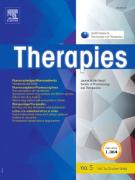Is there a ceiling lamotrigine serum level in epileptic children in remission? - 29/07/22
 , Emna Gaies, Mouna Ben Sassi, Hanene El Jebari, Rania Kammoun, Israa Dahmene, Nadia Jebabli, Issam Salouage, Riadh Daghfous, Sameh Trabelsi
, Emna Gaies, Mouna Ben Sassi, Hanene El Jebari, Rania Kammoun, Israa Dahmene, Nadia Jebabli, Issam Salouage, Riadh Daghfous, Sameh TrabelsiSummary |
Introduction |
Seizure control, in patients with epilepsy, is proportionally associated with health-related quality of life. Antiepileptic therapy leads to seizure remission in most cases. However, some patients are resistant to treatment despite achieving high doses which can be explained by interindividual variability of antiepileptic drugs’ metabolism. A ceiling exposure, in epilepsy, helps to adapt the therapeutic strategy in a faster way and to prevent unnecessary exposure to adverse drug reactions. Due to the increasing use of new generations of antiepileptic drugs, we aimed to explore the distribution of lamotrigine (LMT) trough serum levels in epileptic children, stratified between remission and ongoing seizures, in order to determine whether there is a ceiling effect associated with remission.
Methods |
We conducted a retrospective study (2012–2021) including children, with generalized epilepsy (2–18 years), addressed for a therapeutic drug monitoring of LMT trough serum levels. Patients in remission, should have as lasting three times the longest pre-treatment seizure-free interval and more than one year.
Results |
The population of 114 children with generalized epilepsy was divided in to groups: epileptic children in remission (36) and epileptic children with ongoing seizures (78). There was no significant difference in age and sex in the two groups. Median LMT daily dose and trough serum levels were significantly higher in group 2. The highest LMT serum trough level was 11μg/mL in group 1 and 23.1μg/mL in group 2. Valproate was associated in 29%. There was no significant difference of the distribution of valproate in the two groups (P=0.08).
Conclusions |
Children in remission had a LMT trough serum levels under 11μg/mL and a daily dose of 3.36mg/kg/day or less. These results suggest that this LMT serum level and daily dose might be associated with a ceiling effect in epileptic children.
Le texte complet de cet article est disponible en PDF.Keywords : Therapeutic drug monitoring, Lamotrigine, Children, Epilepsy
Plan
Vol 77 - N° 4
P. 461-466 - juillet 2022 Retour au numéroBienvenue sur EM-consulte, la référence des professionnels de santé.
L’accès au texte intégral de cet article nécessite un abonnement.
Déjà abonné à cette revue ?

